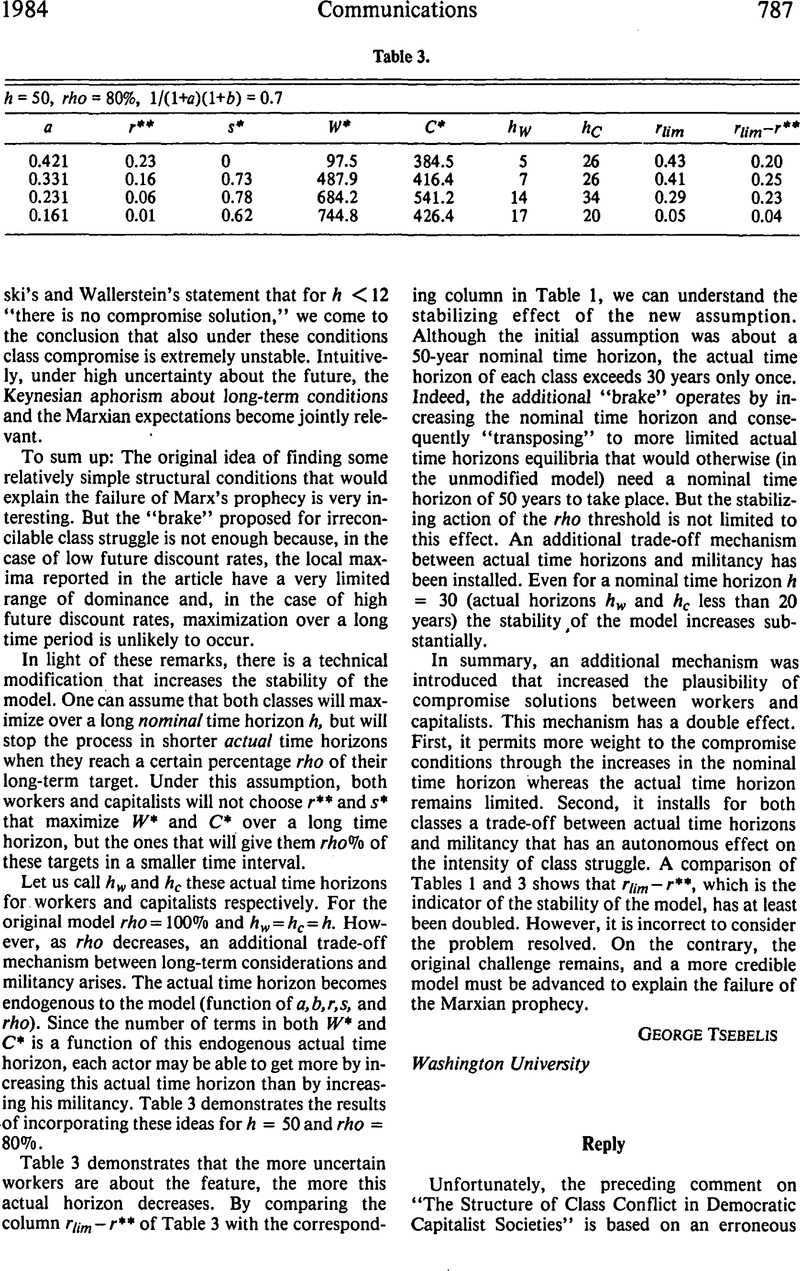No CrossRef data available.
Article contents
Reply
Published online by Cambridge University Press: 01 August 2014
Abstract

- Type
- Communications
- Information
- Copyright
- Copyright © American Political Science Association 1983
References
1 There is a technical confusion in our text. With 1/[(1+a)(1+b)] = 0.7, b > 0.23 when a < 0.16, whereas we assume throughout that 1/c = 0.25. This discrepancy is due to the difference between our analytic results, which assume an infinite horizon, and our simulated results in which the horizon was taken to be 30. Formally and correctly, the proper threshold, call it T, should have been written T = 1/c – ϵ(h), where ϵ(h) > 0, ϵ′(h) < 0, and ϵ(h) → 0 as h →∞.



Comments
No Comments have been published for this article.